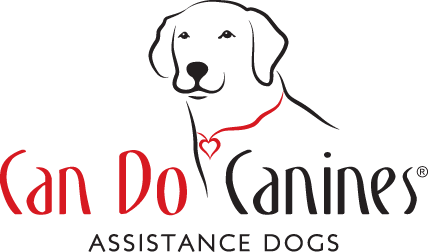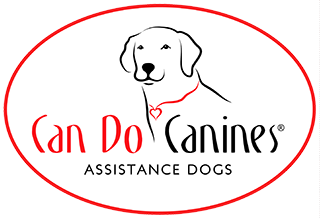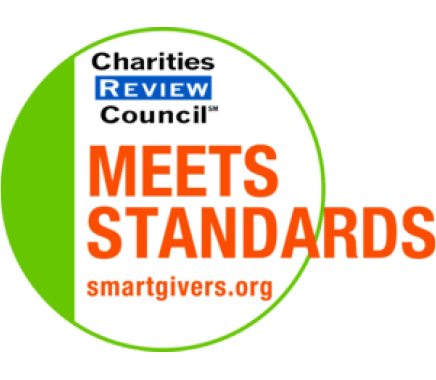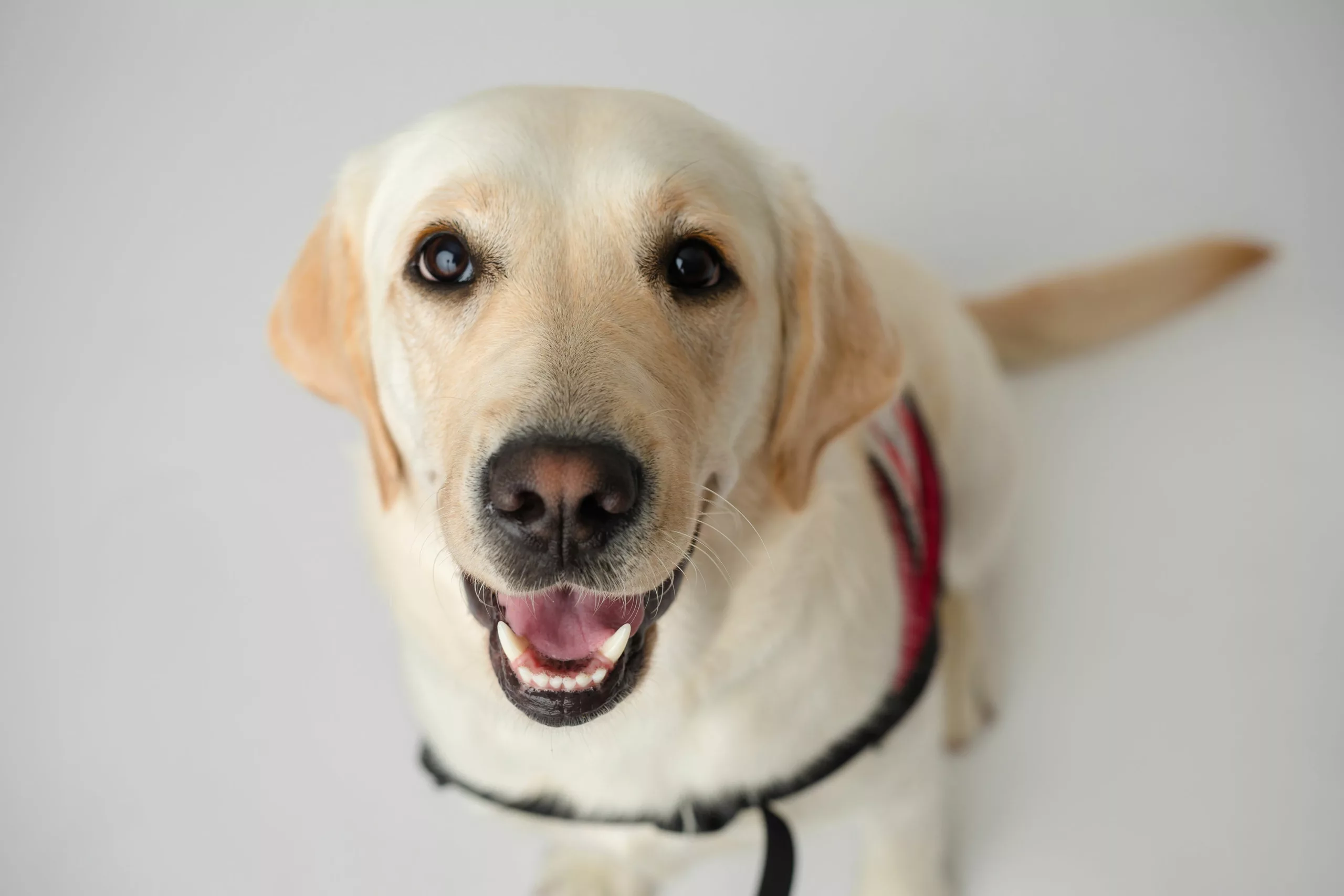Cherish Grabau and Mobility Assist Dog Zane
By Bobb Elsenpeter
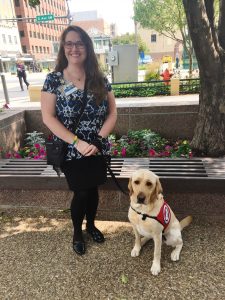 Like many people with multiple sclerosis, Cherish Grabau of Stewartville, Minnesota, has trouble getting her muscles to do what she tries telling them. It can be hard for her to walk, pick things up, and even get out of a chair. She has since discovered that with the help of a Mobility Assist Dog, life has gotten so much easier.
Like many people with multiple sclerosis, Cherish Grabau of Stewartville, Minnesota, has trouble getting her muscles to do what she tries telling them. It can be hard for her to walk, pick things up, and even get out of a chair. She has since discovered that with the help of a Mobility Assist Dog, life has gotten so much easier.
She learned about the benefits of an assistance dog online, then followed up with her own personal research. “I was in one of my online MS groups and one of the other ladies had [an assistance] dog, so I wondered if this might be right for me,” Cherish remembers. “I went online and Googled it and Can Do Canines came up.”
After applying, she was soon teamed up in July with Mobility Assist Dog Zane, a two-and-a-half-year old Yellow Labrador Retriever. The two worked diligently with a field trainer in the Rochester area for continued team training and were certified in September.
Zane helps Cherish with many day-to-day activities that most people take for granted.
“He helps a lot with bracing,” she says. “When I’m on the ground getting something out of the bottom drawer or changing my printer paper, he’ll get in front of me and let me brace on him so I can get up easier. I don’t have to have somebody pull me up.” When she’s sitting in a low chair, she takes out a length of rope and tells Zane to tug, pulling her up. It doesn’t even seem like work to Zane. “He has fun doing it,” she smiles. “It’s a win-win.”
He also helps retrieve things that slip from Cherish’s grasp. “My grip strength comes and goes, so I drop things a lot,” she says. “He happily picks them up for me so I don’t have to bend over and lose my balance, because when I bend over I get really dizzy. If I drop his leash, he’ll pick it up and give it to me so I don’t have to bend down and pick up the handle.”
At the times when she needs something from the other side of the room, Zane is there to help. “He’ll get my cane from across the room or around the corner,” she says. “He knows what it is. I can stay seated and tell him, ‘Zane, go get my cane,’ and he runs and gets it—and then he gets a treat.”
He helps open doors like the refrigerator. “I can just worry about what I’m getting instead of shifting my balance, pulling, and tipping over,” Cherish says.
Zane seems to bring good cheer to those around Cherish. “[A]t work, people I don’t normally talk to just suddenly come up to me with big smiles. ‘How are you two doing?’ People, focused on their work with a wrinkled up brow, look down and say. ‘Hey, buddy!’ Their whole demeanor changes,” she says. “He’s been such an asset to our office.”
Zane has taken some of the caretaking responsibilities off of Cherish’s husband. “He’s been able to take on a couple of weekend shifts at his job,” she says. “He wouldn’t have done that before because he would feel guilty about leaving me alone.”
In a way, Zane has become somewhat of a physical therapist. “The extra walking has helped,” Cherish observes. “I know that my legs are stronger, that’s incredible.” And that extra walking has made it possible to become even more mobile. “We walk from here to the Methodist Hospital to the coffee shop—all over the place,” she says. “No cane, no stick, just my buddy.”
It takes time to be matched with the best assistance dog partner. But for those on the waiting list, Cherish tells them that their patience will be rewarded. “It’s absolutely worth it,” she says. “It’s worth the wait; don’t get discouraged. There is a reason, and it’s because they’re trying to find the perfect match for you.”
Cherish is especially grateful to the donors and volunteers, expressing her gratitude for their generosity and efforts. “I’m just so thankful and grateful,” she says, wiping away a tear. “Everybody has worked so hard and donating their time and their effort in dollars and supplies—everything that makes it possible. It’s just awesome.”
Thank you to all those who made this partnership possible:
Great Start Home: The Tews Family
Puppy Raiser: The inmate handlers at FCI Sandstone and FCI Waseca
Special Thanks: Brian & Rebecca Etling
You: Thank you for your donations!
